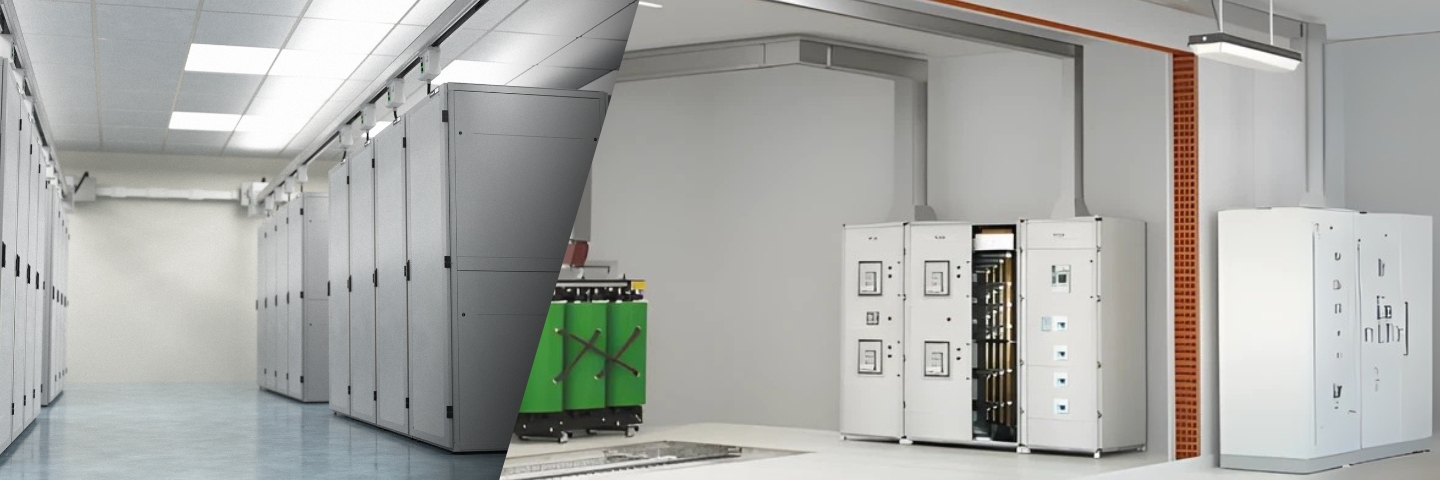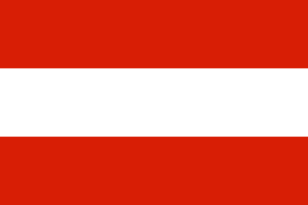Data Center Power Consumption

What is driving the surge in data center power consumption?
Data center power consumption has become one of the most pressing challenges in today’s digital economy, as organizations accelerate their adoption of cloud computing, artificial intelligence, edge computing, and data-intensive applications. Every new technological leap requires massive computing capacity, and with it, a corresponding surge in electricity usage. This growing demand is not only shaping the operational strategies of data center operators but also influencing global energy markets and sustainability policies worldwide.
Modern data centers are among the largest single consumers of electricity on the planet, with energy powering servers, storage devices, network hardware, cooling systems, and supporting infrastructure. According to industry estimates, data centers currently consume between 1–2% of global electricity usage, and this number is projected to rise significantly in the coming decade as AI and machine learning workloads accelerate. In some regions, data centers are already responsible for double-digit percentages of local electricity demand, highlighting the scale of the issue.
The sharp increase in power usage is being driven by multiple factors: the rise of hyperscale facilities that support billions of digital interactions daily, the growing complexity of IT workloads, and the demand for real-time data processing at the edge. At the same time, customers expect uncompromising performance and uptime, pushing operators to scale both their IT and cooling infrastructure. Understanding the drivers behind this surge is essential for developing energy strategies that balance performance, cost, and sustainability.
What are the primary sources of high energy consumption in data centers?
Data center power consumption is not tied to a single system but distributed across multiple layers of infrastructure. From core computing equipment to cooling systems and building services, each component contributes to the overall energy footprint. Collectively, these systems make data centers some of the most energy-intensive facilities in the world, comparable to heavy industrial operations.
Computing Equipment and Physical Servers

At the heart of every data center are servers, networking equipment, and storage devices, which together represent the largest single source of electricity demand. These systems must run continuously, delivering the computational power needed for cloud services, digital platforms, AI applications, and enterprise workloads. As processing speeds increase and workloads become more complex, the amount of energy required by processors, GPUs, and high-density servers continues to climb.
Key computing-related power consumers include:
- Physical server hardware - CPUs, memory, and storage drives that process and store data
- Networking equipment - Routers, switches, and connectivity devices that enable global data transfer
- Storage systems - High-capacity arrays and flash systems ensuring rapid data accessibility
- Specialized processors - GPUs, TPUs, and AI accelerators optimized for high-intensity workloads
- Memory systems - Advanced RAM and cache technologies supporting data throughput
Cooling and Environmental Systems

As IT systems generate enormous amounts of heat, cooling becomes the second-largest consumer of power in most facilities, accounting for 30–40% of total electricity use. Without advanced thermal management, high-density racks would overheat, leading to equipment failures and service interruptions. Modern data centers must therefore rely on sophisticated cooling systems that, while essential, add significantly to the energy bill.
Cooling-related power consumption includes:
- Air conditioning units - Precision CRAC and CRAH systems designed for data center environments
- Cooling distribution systems - Fans, pumps, and AHUs that regulate and circulate conditioned air
- Heat rejection systems - Cooling towers, condensers, and chillers removing heat from facilities
- Environmental monitoring - IoT sensors and AI-based controls managing cooling performance
- Backup cooling systems - Redundant capacity to ensure thermal stability in all conditions
Supporting Infrastructure and Systems

While less visible than servers and cooling, supporting infrastructure is critical for maintaining uptime and reliability. These systems add to the total electricity burden but remain indispensable for security, safety, and operational continuity.
Supporting system power consumption includes:
- Power distribution systems - UPS, PDUs, switchgear, and transformers ensuring power quality
- Lighting systems - Energy requirements for facility lighting and operational visibility
- Security systems - Surveillance, access control, and monitoring platforms
- Fire suppression systems - Active fire detection and suppression infrastructure
- Building management systems - Integrated controls automating efficiency across the facility
How is artificial intelligence impacting data center energy demands?
The rapid adoption of artificial intelligence (AI), machine learning (ML), and high-performance computing (HPC) is fundamentally reshaping the energy landscape of data centers. Unlike traditional enterprise workloads, AI training models demand vast computational resources that operate continuously and at high intensity. This shift is leading to a step-change in electricity requirements, pushing facilities to their limits.
AI-Specific Power Requirements
AI workloads rely heavily on specialized processors such as GPUs, tensor processing units (TPUs), and custom accelerators. These chips consume significantly more energy than standard CPUs, with individual GPUs drawing 300–500 watts compared to 100–200 watts for a typical processor. When deployed in clusters of thousands, the power requirements grow exponentially.
AI-related power consumption factors include:
- High-performance processors - Specialized chips engineered for AI and deep learning tasks
- Accelerated computing clusters - Racks filled with multiple GPUs working in parallel
- Memory-intensive operations - AI models requiring enormous memory capacity and bandwidth
- Continuous processing loads - Training and inference often running 24/7
- Cooling requirements - High thermal output demanding additional cooling capacity
Future AI Growth Impact
Analysts predict that AI-related workloads could increase total data center power demand by 25–30% over the next five years. This growth will drive not only investments in IT hardware but also in supporting systems such as advanced cooling, power distribution, and grid infrastructure. For many operators, the challenge is no longer just scaling capacity, but doing so sustainably and cost-effectively.
Expected AI-driven changes include:
- Increased facility capacity - New AI-optimized data centers designed for high-density racks
- Specialized cooling solutions - Liquid cooling, rear door heat exchangers, and immersion cooling
- Enhanced power distribution - Higher-capacity UPS systems and intelligent PDUs
- Grid infrastructure investments - Collaboration with utilities for electricity reliability
- Renewable energy integration - Stronger adoption of clean energy sources to offset emissions
What solutions can reduce data center power consumption?
Reducing energy consumption in data centers requires a holistic approach that addresses every layer of the facility, from computing to cooling to power distribution. Operators are deploying a mix of hardware upgrades, intelligent management systems, and innovative thermal solutions to reduce power use without compromising performance.
Computing Efficiency Improvements
Optimizing computing resources ensures that every watt of electricity contributes directly to useful workloads. Consolidation, smarter workload scheduling, and power-aware processors can all reduce wasted energy and improve overall facility efficiency.
Computing efficiency strategies include:
- Server consolidation - Virtualization reducing the number of physical servers
- Workload optimization - Matching IT resources to workload intensity
- Processor efficiency - Deploying chips with higher performance-per-watt ratios
- Dynamic power management - Scaling power usage based on workload demand
- Application optimization - Software engineering improvements reducing computing cycles
Advanced Cooling Solutions
Cooling is one of the largest levers for reducing data center energy costs. By deploying advanced thermal management strategies, operators can slash cooling-related electricity use while supporting higher rack densities.
Advanced cooling solutions include:
- Liquid cooling systems – Direct-to-chip and immersion systems reducing energy waste
- Rear door heat exchangers (RDHx) – Capturing heat at the rack level for efficiency
- Free cooling utilization – Leveraging favorable outdoor air conditions
- Hot aisle containment – Segregating airflow to prevent mixing of hot and cold streams
- Variable controls – Adjusting cooling dynamically based on IT load
- Intelligent cooling controls – AI-driven platforms automating cooling performance
Power Distribution and Management
Electricity must be delivered efficiently across the facility to minimize losses. Modern UPS systems, intelligent PDUs, and energy monitoring platforms help ensure that every kilowatt is used productively.
Power management improvements include:
- High-efficiency UPS systems - Reducing conversion losses with modern topologies
- Smart power distribution - PDUs providing granular visibility into rack-level power
- Power factor correction - Eliminating waste caused by poor power quality
- Energy monitoring systems - Real-time tracking and analytics for efficiency gains
- Demand response programs - Adjusting consumption during peak grid periods
How can Legrand's LDCS solutions help address power consumption challenges?
Legrand’s Data Center Solutions (LDCS) portfolio provides a comprehensive toolkit for tackling energy challenges across distribution, cooling, and monitoring. By combining high-efficiency components with intelligent management, Legrand enables operators to reduce power usage while maintaining uptime and performance.
Intelligent Power Distribution Solutions
Legrand’s next-generation PDUs, busways, and distribution systems are engineered to optimize energy transfer while providing detailed visibility. This allows operators to pinpoint inefficiencies and scale capacity flexibly as workloads grow.
Key power distribution benefits include:
- High-efficiency PDUs - Optimized for minimal losses
- Real-time monitoring - Detailed consumption tracking at device and rack levels
- Intelligent load management - Automated balancing to prevent overprovisioning
- Energy reporting capabilities - Analytics supporting sustainability targets
- Scalable architecture - Systems that adapt to future workload growth
Cooling Support and Optimization
Legrand also offers a range of airflow management and cooling optimization tools that complement facility cooling strategies. These products help reduce waste by improving airflow paths and containing thermal zones effectively.
Cooling support solutions include:
- Airflow management systems - Optimizing cold air delivery and hot air removal
- Containment solutions - Reducing mixing of hot and cold air streams
- Rear Door Heat Exchangers (RDHx) - Removing high-density heat directly at the source
- Environmental monitoring - Tracking airflow, humidity, and thermal performance
- Rack-level cooling - Targeted cooling for specific high-density deployments
- Energy-efficient designs - Products engineered to consume less electricity
Infrastructure Monitoring and Management
With intelligent monitoring systems, Legrand provides visibility across power and cooling systems, enabling operators to act proactively. Predictive insights and automated controls ensure continuous optimization without manual intervention.
Monitoring capabilities include:
- Energy usage monitoring - Granular consumption data across systems
- Predictive analytics - AI-based recommendations for optimization
- Automated controls - Adjusting power and cooling dynamically
- Comprehensive reporting - Supporting ESG and compliance initiatives
- Integration capabilities - Compatibility with BMS and DCIM systems
What does the future hold for data center energy efficiency?
The next decade will be defined by balancing skyrocketing demand for digital services with the urgent need for sustainability. Emerging technologies, stricter regulatory frameworks, and industry collaboration will shape how operators manage power consumption at scale.
Emerging Technologies and Innovations
Cutting-edge innovations promise to reduce the energy intensity of data centers while expanding computing capacity. From renewable integration to AI-based optimization, these solutions will transform facility design and operations.
Future technology trends include:
- Advanced processor designs - Chips with lower energy-per-compute ratios
- Renewable energy integration - On-site and off-site clean power procurement
- Energy storage systems - Batteries and supercapacitors balancing grid demand
- Artificial intelligence optimization - Continuous facility tuning via machine learning
- Innovative cooling technologies - Immersion, two-phase, and hybrid cooling methods
Industry and Regulatory Developments
Governments and industry bodies are accelerating efforts to ensure that data center growth aligns with climate and energy goals. Efficiency standards, renewable mandates, and carbon reporting frameworks will push operators toward cleaner, smarter facilities.
Expected regulatory impacts include:
- Carbon emissions targets - Stricter caps on greenhouse gases
- Energy efficiency standards - Baseline requirements for facility performance
- Renewable energy mandates - Requirements for sourcing clean power
- Grid integration requirements - Enhanced coordination for demand response
- Reporting and transparency - Disclosure obligations on energy and emissions
Data center energy consumption is both a challenge and an opportunity: a challenge because of its scale and complexity, but an opportunity because every efficiency gain translates into cost savings, resilience, and sustainability benefits.
Through advanced power distribution, cooling optimization, and intelligent monitoring systems, organizations can significantly reduce their energy footprint while maintaining the reliability that the digital world depends on.
Legrand Data Center Solutions provides the essential components and expertise required to implement these strategies, helping operators achieve operational excellence and environmental responsibility in equal measure.
























 Canada
Canada
 Latin America (English)
Latin America (English)
 Latin America (Espanol)
Latin America (Espanol)
 USA
USA
 China
China
 India
India
 Japan
Japan
 Republic of Korea
Republic of Korea
 South East Asia (English)
South East Asia (English)
 Austria
Austria
 Belgium
Belgium
 France
France
 Germany
Germany
 Italy
Italy
 Netherlands
Netherlands
 Spain
Spain
 Switzerland
Switzerland
 Turkey
Turkey
 UK
UK
 Africa (english)
Africa (english)
 Africa (français)
Africa (français)
 Middle East (english)
Middle East (english)
 Australia
Australia
 New Zealand
New Zealand